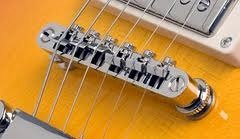Quote from adam on May 1, 2013, 18:39
Petersgiles, relax, it's the nut. The nuts on our kits are a bit hit and miss I'm afraid. Part of the kit building process is to get the nut at the right height so you have good intonation up and down the neck.
Dingo Bass will tell you to go and buy a bone nut, but you can probably make do with the nut that came with the kit.
You need to remove the nut from the neck and sand/file it down a few mm until you get the right action/intonation. I can't describe exactly how to do this in just one post, but someone may be able to direct you to an appropriate tutorial... it's really something you need to dive in and try until you get the result you're after.
And, if you mess it up, no problem, you can get a replacement nut from any guitar store for a couple of bucks.
If you don;t feel like filing/sanding the existing nut, maybe you can buy a few different size (depth) nuts until you get the right one for your guitar.
Let us know how you go.






 Reply With Quote
Reply With Quote


 Gavmeister
Gavmeister
![[url=https://www.facebook.com/kellysgutiars]](image.php?u=1285&type=sigpic&dateline=1444110346)

